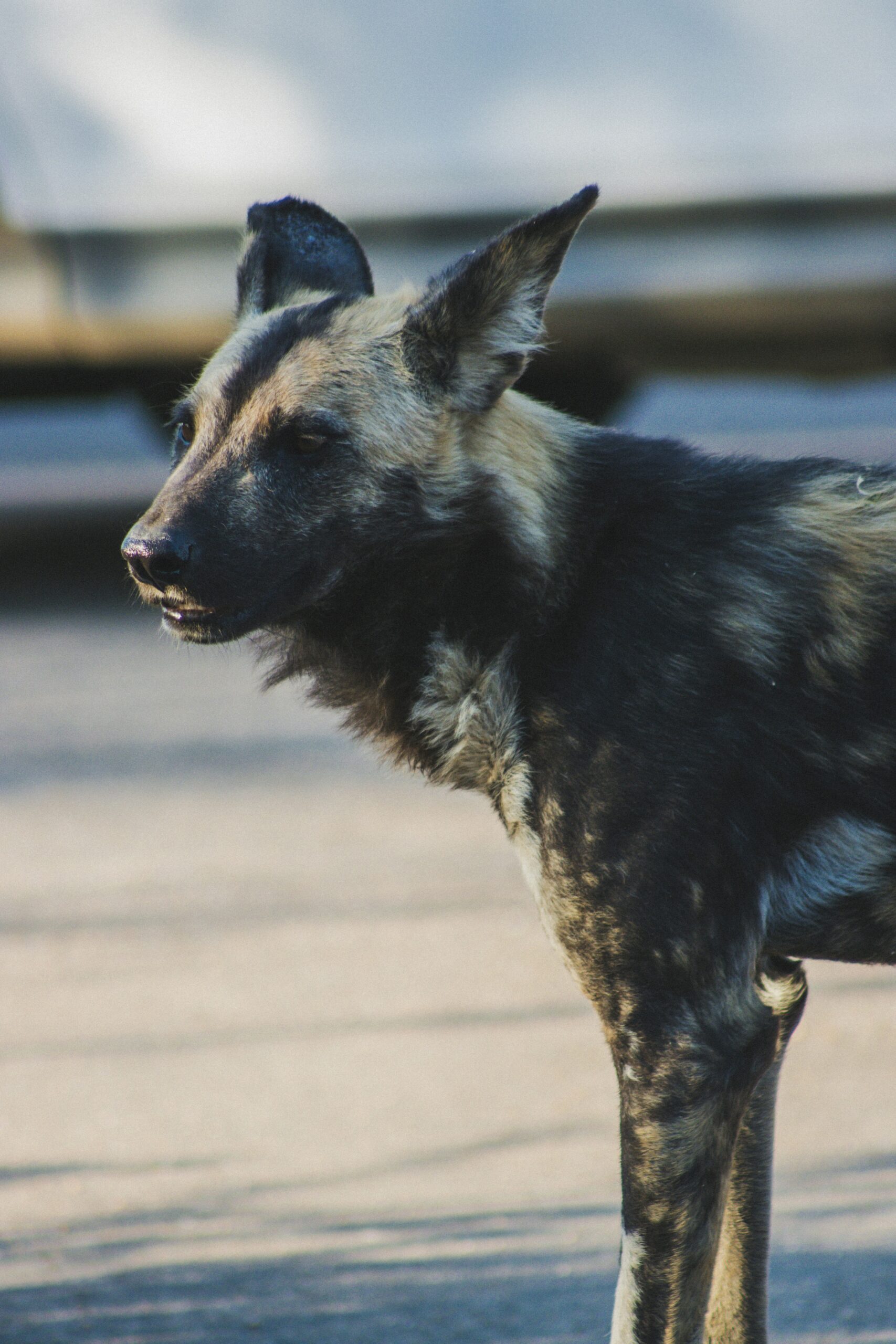The African wild dog stands out as one of the most remarkable and endangered species on our planet. Often misunderstood, these highly social animals display exceptional hunting techniques and strong pack dynamics that captivate wildlife enthusiasts. As habitat loss and human-wildlife conflict threaten their existence, understanding the unique characteristics and behaviors of the African wild dog becomes crucial. Let’s dive deep into the world of this fascinating creature and uncover the key aspects you should know to appreciate and support its conservation.
Introduction to the African Wild Dog
The African wild dog, also known as the painted wolf, is a fascinating and unique species that captures the attention of wildlife enthusiasts and conservationists alike. Characterized by their distinctively mottled coat, these social animals embody a striking combination of beauty and instinct.
Key Features of the African Wild Dog:
- Appearance: Their coats display a captivating blend of yellows, blacks, and whites. Each dog’s pattern is unique, serving as an identifier within packs.
- Size: Typically, adult African wild dogs weigh between 40 to 70 pounds and measure about 30 inches at the shoulder.
- Adaptations: Their large, rounded ears not only enhance hearing but also help with thermoregulation in hot climates.
Importance of the African Wild Dog:
The African wild dog plays a critical role in its ecosystem. As top predators, they help maintain healthy populations of herbivores, which directly influences biodiversity.
In conclusion, the African wild dog embodies a unique blend of social complexity and ecological significance, making it a species worth understanding and protecting.
Habitat and Distribution of African Wild Dogs
Understanding the habitat and distribution of the African wild dog is crucial to grasp its survival challenges. These incredible animals favor a few key environments:
- Savannas: Open grasslands provide excellent visibility for hunting and social interactions.
- Wooded Areas: Thickets offer shelter and resting spots, crucial for nurturing their young.
- Mountains and Hills: Elevation can help them spot both prey and potential threats.
In terms of distribution, the African wild dog primarily roams:
| Region | Presence | Population Size |
|---|---|---|
| Sub-Saharan Africa | Common | Estimated 6,000 |
| Southern Africa | Healthy | Around 3,000 |
| East Africa | Declining | Approximately 1,500 |
| Northern Africa | Rare | Fewer than 500 |
As their number dwindles, the African wild dog now finds itself mostly in protected areas such as national parks and reserves. Conservation efforts are vital to ensure their habitat remains undisturbed. Protecting these environments not only safeguards the African wild dog but also maintains the ecological balance in these regions. Thus, urgent action is necessary.
Physical Characteristics of the African Wild Dog
The African wild dog is a remarkable species, known for its unique physical traits that set it apart from other canids. Here’s what makes them stand out:
- Size and Build:
- Adults weigh between 40 to 75 pounds.
- They measure about 24 to 30 inches at the shoulder.
- Distinctive Coat:
- Their fur features a patchy pattern of black, brown, yellow, and white.
- Each individual has a unique coat, much like a fingerprint.
- Facial Features:
- The African wild dog has large, rounded ears that enhance their hearing abilities.
- Their muzzle is long and slender, adapted for catching prey effectively.
- Body Structure:
- They possess long legs and a lean build, making them agile and fast—crucial for their hunting lifestyle.
Comparison with Other Canids:
| Trait | African Wild Dog | Domestic Dog | Gray Wolf |
|---|---|---|---|
| Weight | 40-75 lbs | Varies | 50-110 lbs |
| Coat Pattern | Patchy | Diverse | Solid |
| Social Structure | Pack-oriented | Variable | Pack-oriented |
| Hunting Technique | Cooperative | Variable | Cooperative |
These characteristics make the African wild dog a fascinating species, uniquely adapted to its environment and lifestyle. Understanding these traits can foster a deeper appreciation for this endangered animal.
Social Structure and Pack Behavior
The African wild dog showcases a remarkable social structure that sets it apart from many other canids. Here are some essential characteristics of their pack behavior:
- Pack Living: African wild dogs thrive in packs typically ranging from 2 to 27 members, with an average of 10. This strong social bond plays a crucial role in their survival and hunting success.
- Hierarchy: Each pack has a dominant pair, usually the alpha male and female, who lead the group. They make critical decisions regarding movement and hunting strategies.
- Cooperative Hunting: Unlike solitary hunters, African wild dogs utilize teamwork to catch prey. They communicate through a series of vocalizations and body language, ensuring everyone is on the same page during a chase.
- Caregiving: Pack members display care for each other’s young and elderly. They share food with weaker individuals, reinforcing their social bonds.
The intricate social structure of the African wild dog fosters resilience and adaptability, making them one of the most efficient hunters in the animal kingdom. Embrace their unique behaviors to appreciate these fascinating creatures fully!
Hunting Techniques and Diet
The African wild dog is renowned for its exceptional hunting techniques and social cooperation during hunts. These fascinating animals have evolved strategies that set them apart from many other predators. Here’s what you need to know:
- Teamwork: The African wild dog hunts in packs, utilizing their impressive coordination. Each member of the pack plays a role, ensuring the hunt is efficient and effective.
- Stamina: Unlike other predators that rely on ambush, the African wild dog uses its endurance. They chase prey for long distances, often exhausting their victims before closing in for the final strike.
- Diverse Diet: Their diet mainly consists of:
- Antelopes (such as impalas and springboks)
- Smaller mammals (like hares and birds)
- Success Rate: Their hunting success rate can reach up to 80%, far superior to that of many big cats. This efficiency allows their packs to thrive.
In summary, the hunting prowess of the African wild dog showcases their intelligent cooperation and remarkable adaptations, making them outstanding predators in their ecosystem.
Reproductive Behavior and Life Cycle
The African wild dog exhibits fascinating reproductive behavior that’s crucial to the survival of the species. Here’s what you need to know:
- Mating Season: Breeding typically occurs between May and August when food supply is plentiful, ensuring the best chance for survival of the pups.
- Gestation: Female African wild dogs carry their young for about 70 days. After this period, she usually gives birth to a litter ranging from 2 to 20 pups, depending on environmental conditions and pack health.
- Pup Rearing: Both parents and other pack members actively help nurture the pups. They provide food and protection, showcasing their strong social bonds.
- Independence: Puppies start developing hunting skills at around three months. They will remain with the pack for up to 2 years, learning vital survival skills.
- Life Span: In the wild, the African wild dog typically lives around 10 years. However, their life span can be shorter due to threats from humans and habitat loss.
Understanding the reproductive cycle of the African wild dog helps in conservation efforts, ensuring the species continues to thrive in their natural habitats.
Interaction with Other Wildlife
The african wild dog plays a vital role in its ecosystem, exhibiting unique interactions with various species. Here’s how they engage with wildlife in their habitat:
- Prey Dynamics: The african wild dog primarily hunts medium-sized ungulates, such as impalas and wildebeests, which influences their population dynamics. Their pack-hunting strategies enhance the efficiency of prey capture, serving as natural checks on prey populations.
- Competition: They often face competition from other predators like lions and hyenas. While the african wild dog excels in teamwork, larger predators may overpower them. This competition impacts food availability and pack territories.
- Scavenging Opportunities: The african wild dog sometimes scavenges leftover kills from larger predators. This behavior showcases their adaptability and resourcefulness, ensuring their survival in tough environments.
- Impact on Biodiversity: By controlling herbivore populations, african wild dogs help maintain plant diversity, which ultimately supports other animal species.
Understanding the interactions of the african wild dog with other wildlife highlights its importance in maintaining the balance of the African ecosystem and emphasizes the need for its conservation.
Interaction with Other Wildlife
The African Wild Dog plays a significant role in its ecosystem, interacting with various wildlife in unique ways. Understanding these interactions helps highlight its ecological importance:
- Predator Dynamics: The African Wild Dog is an apex predator. Interestingly, their hunting tactics often benefit other species, as they target weak or sick animals, maintaining a balanced prey population.
- Competition: They face competition from larger predators like lions and hyenas. However, the African Wild Dog often hunts in packs, giving them an advantage in capturing prey and reducing competition for food.
- Scavenging Relationships: After a successful hunt, the African Wild Dog doesn’t shy away from scavenging leftovers from other predators, showcasing its adaptability. This behavior influences the feeding patterns of scavengers like vultures.
- Human-Wildlife Interactions: In some regions, African Wild Dogs coexist peacefully with local wildlife, while in others, conflicts arise, often due to livestock predation. Understanding these interactions is vital for developing coexistence strategies.
In summary, the African Wild Dog showcases complex interactions within its ecosystem, underlining the importance of its conservation not only for its survival but for the health of the entire habitat.
Cultural Significance and Human Perception
The african wild dog has fascinated humans for centuries, embodying both a sense of wonder and concern. Here are some key insights into their cultural significance and how people perceive these unique creatures:
- Symbol of resilience: The african wild dog represents adaptability and survival in harsh environments. Many cultures see it as a symbol of the wild, reminding us of nature’s raw beauty.
- Folklore and mythology: Numerous African tribes incorporate the african wild dog into their tales, often portraying it as a clever and cunning being. This storytelling fosters a connection between the species and local traditions.
- Conservation icon: With dwindling populations, the african wild dog serves as a flagship species for conservation efforts, raising awareness about broader environmental issues. People rally around their plight, driving initiatives aimed at preserving habitats.
- Negative perceptions: Unfortunately, some view the african wild dog as a threat to livestock, fueling conflict between humans and wildlife. Education and awareness are crucial to changing these misconceptions.
In summary, the african wild dog holds diverse cultural meanings, highlighting a need for understanding and coexistence. Embracing its significance can lead to better conservation practices and harmonious human-animal interactions.
How to Help in Conservation Efforts
Protecting the African wild dog is crucial for maintaining biodiversity and ecological balance. Here are effective ways you can contribute to conservation efforts:
- Support Wildlife Organizations: Donating to organizations that focus on the conservation of the African wild dog helps fund essential initiatives. Many programs work on habitat preservation and anti-poaching efforts.
- Raise Awareness: Share information about the plight of the African wild dog on social media, at community events, or through educational programs. Awareness leads to greater public support for conservation measures.
- Participate in Eco-Tourism: Visiting reserves and parks that prioritize the protection of the African wild dog provides financial support to these vital areas. Choose eco-friendly tours to ensure that your visit has minimal negative impact.
- Volunteer: Offer your time to local wildlife rehabilitation or conservation programs that focus on the African wild dog. Your efforts can help in monitoring populations and promoting education.
- Advocate for Policy Changes: Engage with local and national policymakers to promote legislation targeting habitat protection and wildlife conservation.
By taking these actionable steps, you can play a part in preserving the future of the African wild dog.



